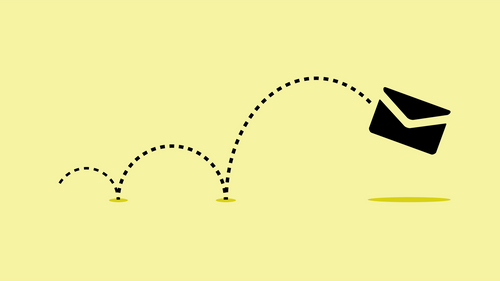In the digital marketing orchestra, the bounce rate often plays the discordant note that can disrupt the melody of an email campaign. When emails bounce back, it’s not just a minor setback—it’s a lost opportunity to connect, engage, and convert. But fear not, for every dilemma carries the seed of opportunity. Here’s how to transform your email setbacks into resounding successes.
The Riddle of Bounce Rates
A bounce rate is more than a mere metric; it's the pulse of your email marketing health. It measures the percentage of emails that were not successfully delivered to the recipient's inbox. A high bounce rate is an alarm, signaling issues that can range from technical snafus to strategic misfires. Let’s decode this riddle and flip the narrative.
Identifying the Culprits
Understanding the reasons behind email bounces is the first step towards resolution. There are two primary perpetrators:
Hard Bounces: These are the email addresses that are no longer valid. They’re the dead ends of your email pathways.
Soft Bounces: These temporary delivery issues are like detours, often caused by full inboxes or server problems.
Strategy Overhaul: The Turnaround Playbook
To turn setbacks into success, a multifaceted strategy is essential. Here’s your playbook:
1. Quality Over Quantity
Start by ensuring your email list is a golden list—accurate, up-to-date, and full of prospects eager to hear from you. Regular list maintenance removes the chaff, leaving you with the cream of the crop.
2. The Power of Authentication
Your emails must be beyond reproach, with clear paths back to your reputable domain. SPF, DKIM, and DMARC aren’t just acronyms; they are your stamps of authenticity that improve deliverability.
3. Audience Segmentation
Not all readers are the same, so why treat them as such? Segment your list and personalize the content. This not only reduces bounces but significantly amps up engagement.
4. Content That Captivates
Craft emails that are irresistible. From subject line to signature, every word should be designed to delight, engage, and spur action.
5. Responsive Design
In a mobile-first world, emails that display beautifully across devices are the ones that get read. Responsiveness is no longer optional; it’s imperative.
6. Warm up Those IPs
If you’re launching a new campaign, warm up your IP address. Gradually increase your send volume to establish a reputation with ISPs as a legitimate sender.
7. The Feedback Loop
Embrace feedback, both from your subscribers and your metrics. Address complaints, honor unsubscribe requests swiftly, and let analytics guide your path forward.
8. Re-engagement Campaigns
Awaken dormant subscribers with a nudge, a special offer, or a compelling message. Remember, a re-engaged subscriber is a victory over the bounce.
9. Test, Learn, Adapt
Finally, test every variable, learn from the outcomes, and adapt. The beauty of digital marketing lies in its agility—use it.
The Proactive Path Forward
Transforming your email bounce setbacks into success stories is a proactive journey. It demands attention to detail, an embrace of best practices, and a commitment to continuous improvement. By refining your approach, not only will you lower your bounce rates, but you’ll also elevate the entire email experience for your audience.
Conclusion: Symphony of Success
Think of each email as a note in a larger symphony. When every note hits the right pitch—when your emails reach the inbox, engage the reader, and prompt action—you create a symphony of success. Bounce rates are but one note in this musical score, and with the right conductor at the helm, the potential for a standing ovation is within your grasp. Let your marketing sing, and watch as those setbacks transform into ovations of success.



